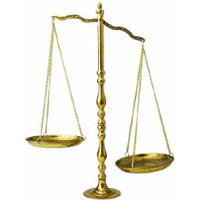Women Judges Are Cited Less Often Than Their Male Peers
Posted on Sep 27, 2023 | Comments 0
 Researchers from the University of North Carolina at Charlotte, the University of Louisville, the University of Georgia, and Brigham Young University in Utah analyzed how the race and gender of federal judges might be impacting judicial processes. Specifically, they wanted to see which types of judges get the most attention from their peers when they have complete discretion to reference another judge’s work.
Researchers from the University of North Carolina at Charlotte, the University of Louisville, the University of Georgia, and Brigham Young University in Utah analyzed how the race and gender of federal judges might be impacting judicial processes. Specifically, they wanted to see which types of judges get the most attention from their peers when they have complete discretion to reference another judge’s work.
After analyzing out-of-circuit citations to a sample of more than 2,000 published federal appellate decisions from 2009 to 2016, the researchers found that majority opinions written by female judges receive significantly fewer subsequent citations from other courts than those by men.
Over the five-year period studied, female judges received 1.4 external citations to their opinions compared to 1.63 citations to opinions written by equivalent male judges. While that difference may initially seem small, it really hits home when accumulated over a career. An average judge produces 53.5 opinions a year, so in 10 years of full-time service, male judges would have 120 more citations than female judges. This cumulative difference is particularly problematic because citation of legal precedent is foundational to the U.S. common law legal tradition.
“We wondered why decisions by some judges are better able to catch the attention of their peers and are afforded more influence in the development of law,” said study co-author Robert Christensen, a professor in the Marriott School’s Romney Institute of Public Service and Ethics at Brigham Young University. “Our results indicate a clear bias against citing majority opinions authored by women.”
Professor Christensen added that “even among judges who are trained in equity and due process, we are not yet past the point where we can say we live in a bias-free world. Subconscious biases are still very much at work, and when that is shaping the common law of the country, we think that deserves both scholarly and practical attention.”
The full study, “Who Shapes the Law? Gender and Racial Bias in Judicial Citations,” was published on the website of the American Political Science Review. It may be accessed here.
Filed Under: Gender Gap • Research/Study








